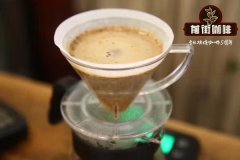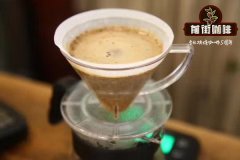Introduction of Origin, elevation level and Coffee Flavor characteristics of San Juan Theodor in Honduras
San Juan Theodore, Honduras
Honduras is located in the north of Central America, facing the Caribbean Sea to the north, the Gulf of Fonseca in the Pacific Ocean to the south, Nicaragua and El Salvador to the east and south, and Guatemala to the west, mostly mountains and plateaus. It has a tropical climate, mild temperature and abundant rainfall, so it is an ideal place for coffee growth. There are six major producing areas, mainly located in the west and south of Koban District (Copan), Obalaka District Opalaca), Mondesius (Montecillos), Gongma Agua (Comayagua), Akata (Agalta Tropical), Parasso (El Paraiso).
The average planting height of fine coffee is more than 1100 meters above sea level, which can be divided into three grades: Standard, 1000 meters; HG, 1000-1500 meters; and SHB, more than 1500 meters.
San Juan Ciudo is a small village in central Honduras, 40 kilometers northeast of Tegucigalpa, the capital of Honduras. The town is under the jurisdiction of Francisco Morz á n. The estate is located in the buffer zone of La Tigra National Park and has an independent rainforest ecosystem. Its climate and altitude are very conducive to the production of high-quality coffee beans, grown in the mountains at an altitude of 1450-1550 meters, and shaded by bananas, avocados, papaya and other fruit trees.
Pick by hand, and then pick out ripe fruit, which often takes several weeks to pick. The coffee beans are treated by water washing. The floating beans are first soaked and then peeled off by machine. Local farmers think that the larger the fruit is, the better the maturity is. The fruit is fermented for 10-12 hours, then washed with water, and finally dried in an African drying bed for 8 to 10 days, so there is always a light fruity flavor in its taste.
Flavor: obvious sweetness of caramel, roasted nuts, milk chocolate, full creamy texture, light spices and the end of oolong tea.

Important Notice :
前街咖啡 FrontStreet Coffee has moved to new addredd:
FrontStreet Coffee Address: 315,Donghua East Road,GuangZhou
Tel:020 38364473
- Prev

Introduction of coffee flavor characteristics and double washing of coffee treatment in Burundi (Heart of Africa)
Burundi the Heart of Africa is located on top of the steep East African Rift Valley with complex terrain. More than 800000 of Burundian families depend on coffee cultivation for their livelihood, mostly on small-scale coffee plantations, planted at intervals from other crops, without mechanization. Coffee grows on mountains between 1400 and 1700 meters above sea level. Most of the varieties of coffee trees are bourbon and its varieties.
- Next

Introduction of Columbia Linglong producing area and specific description of coffee flavor
Columbia has three Codiera mountains running north and south, right into the Andes. Coffee is grown along the highlands of these mountains. The mountain steps provide a diverse climate, where the whole year is the harvest season, and different kinds of coffee ripen at different times. And fortunately, unlike Brazil, Colombia doesn't have to worry about frost. Columby
Related
- Detailed explanation of Jadeite planting Land in Panamanian Jadeite Manor introduction to the grading system of Jadeite competitive bidding, Red bid, Green bid and Rose Summer
- Story of Coffee planting in Brenka region of Costa Rica Stonehenge Manor anaerobic heavy honey treatment of flavor mouth
- What's on the barrel of Blue Mountain Coffee beans?
- Can American coffee also pull flowers? How to use hot American style to pull out a good-looking pattern?
- Can you make a cold extract with coffee beans? What is the right proportion for cold-extracted coffee formula?
- Indonesian PWN Gold Mandrine Coffee Origin Features Flavor How to Chong? Mandolin coffee is American.
- A brief introduction to the flavor characteristics of Brazilian yellow bourbon coffee beans
- What is the effect of different water quality on the flavor of cold-extracted coffee? What kind of water is best for brewing coffee?
- Why do you think of Rose Summer whenever you mention Panamanian coffee?
- Introduction to the characteristics of authentic blue mountain coffee bean producing areas? What is the CIB Coffee Authority in Jamaica?

